 | TODAY IN SCIENCE HISTORY NEWSLETTER - 2 MAY |
| Feature for Today |
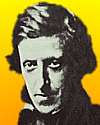 On 2 May 1857, Frederick Scott Archer died, the English inventor who invented the photographic wet collodion process (1850), the first by which multiple prints could be made, and used for the next three decades until replaced by the use of the modern gelatin emulsion. On 2 May 1857, Frederick Scott Archer died, the English inventor who invented the photographic wet collodion process (1850), the first by which multiple prints could be made, and used for the next three decades until replaced by the use of the modern gelatin emulsion.He is one of those inventors whose name is little-known, died in poverty and yet made a great contribution in his field. When he died, a subscription was collected for his widow, and also Parliament granted her, and their children, a government pension, in appreciation of the value of his invention to the nation. For a short outline of his life, and the wet collodian process, read this article from A History of Photography (1888). |
| Book of the Day | |
| |
| Quotations for Today | |
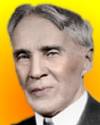 | "Scientific and humanist approaches are not competitive but supportive, and both are ultimately necessary." |
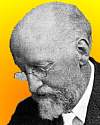 | "But, as Bacon has well pointed out, truth is more likely to come out of error, if this is clear and definite, than out of confusion, and my experience teaches me that it is better to hold a well-understood and intelligible opinion, even if it should turn out to be wrong, than to be content with a muddle-headed mixture of conflicting views, sometimes miscalled impartiality, and often no better than no opinion at all." |
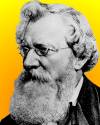 | "I will on this occasion... select my illustrations from that most delightful of games, croquet. Let the croquet balls represent our atoms, and let us distinguish the atoms of different elements by different colours. The white balls are hydrogen, the green ones chlorine atoms; the atoms of fiery oxygen are red, those of nitrogen, blue; the carbon atoms, lastly, are naturally represented by black balls. … To exhibit the different combining powers of these atoms, (we screw) into the balls a number of metallic arms (tubes and pins), which correspond respectively to the combining powers of the atoms represented ... to join the balls … in imitation of the atomic edifices represented." |
| QUIZ | |
| Before you look at today's web page, see if you can answer some of these questions about the events that happened on this day. Some of the names are very familiar. Others will likely stump you. Tickle your curiosity with these questions, then check your answers on today's web page. | |
| Births | |
| |  An American pediatrician, born 2 May 1903, was perhaps the best-known writer of books on child rearing. An American pediatrician, born 2 May 1903, was perhaps the best-known writer of books on child rearing. Can you name this pediatrician? Can you name this pediatrician? |
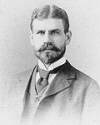 |  Jesse William Lazear, born 2 May 1866, was an American physician who as a member of the yellow fever commission proved that the infectious agent of yellow fever is transmitted by A�des aegypti. Jesse William Lazear, born 2 May 1866, was an American physician who as a member of the yellow fever commission proved that the infectious agent of yellow fever is transmitted by A�des aegypti. What is the common name of this agent? What is the common name of this agent? |
| Deaths | |
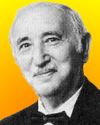 |  David Wechsler (1896-1981) was a U.S. psychologist who is also known for his work with abilities of children and adults. David Wechsler (1896-1981) was a U.S. psychologist who is also known for his work with abilities of children and adults.  What ability did he test? What ability did he test? |
 |  This Italian who died 2 May 1519 had many talents as painter, sculptor, architect and engineer. He filled notebooks with his scientific ideas. This Italian who died 2 May 1519 had many talents as painter, sculptor, architect and engineer. He filled notebooks with his scientific ideas.  Can you name him? Can you name him? |
| Events | |
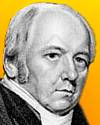 |  On 2 May 1800, William Nicholson, an English chemist took a battery he had built, and some water, and did something with them never done before. On 2 May 1800, William Nicholson, an English chemist took a battery he had built, and some water, and did something with them never done before. What did he do? What did he do? |
 In 1775, this famous American patriot and scientist finished a study of the Gulf Stream. While deputy postmaster of the British Colonies, beginning in 1769, he noted and set about explaining the fact that ships took 2 weeks longer to bring mail from England than was needed for the return voyage. In 1775, this famous American patriot and scientist finished a study of the Gulf Stream. While deputy postmaster of the British Colonies, beginning in 1769, he noted and set about explaining the fact that ships took 2 weeks longer to bring mail from England than was needed for the return voyage. Can you name this man? Can you name this man? | |
| Answers |
When you have your answers ready to all the questions above, you'll find all the information to check them, and more, on the May 2 web page of Today in Science History. Or, try this link first for just the brief answers. Fast answers for the previous newsletter for May 1: Gene Shoemaker; Dutch; the number of chromosomes is the same in all body cells of a single species; the Kon Tiki; Erwin Schr�dinger. |
| Feedback |
 If you enjoy this newsletter, the website, or wish to offer encouragement or ideas, please send feedback by using your mail reader Reply button. If you enjoy this newsletter, the website, or wish to offer encouragement or ideas, please send feedback by using your mail reader Reply button. |
--
If you do not want to receive any more newsletters, Unsubscribe
To update your preferences and to unsubscribe visit this link


Δεν υπάρχουν σχόλια:
Δημοσίευση σχολίου